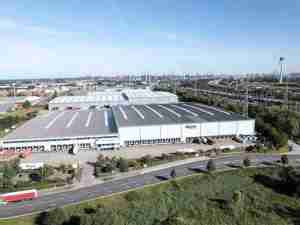Cosan president Julio Fontana said the firm would invest 280 million reais ($165 million) in improving its two private terminals to raise capacity to around 17 million to 18 million tonnes per year, up from 10 million to 11 million at present.
The investments would be made through the company's logistics arm, Rumo. Fontana, speaking at a conference with analysts, did not say when the works would begin or how long they would take, but said the investments were happening now.
Cosan also planned to install a canopy at its terminals to enable sugar to continue to be top-loaded into ships on rainy days, ending stoppages that occur each year in wet weather.
"We have a solution in the final stages of its development," Fontana said. "With this (cover), it's as if you are adding another berth, or 30 percent to your loading capacity," he said.
A spell of wet weather earlier this year exacerbated the long wait to load sugar at Brazil's top two sugar ports, Santos in Sao Paulo, the largest sugar producing state, and Paranagua in neighboring Parana state. There were 120 days of rain in 2009 and as many so far in 2010, causing disruption each time.
A local engineering company is developing a flexible canopy to cover ships' holds to enable them to load in the rain, though Fontana did not specify if this was the technology Cosan planned to use.
Fontana said Cosan was also looking into investing in new terminals, but did not give details.
Santos handles about 70 percent of Brazil's sugar shipments.
Rumo is also making investments in rail transport including 400 million reais in a contract with America Latina Logistica , better known as ALL, for wagons and locomotives and 571 million reais for train tracks.
Investments in rail so far have already helped increase volumes of Cosan's sugar reaching Santos by train. So far this year, 28 percent of its sugar reached Santos by rail compared with 14 percent in 2009. (Reuters)









